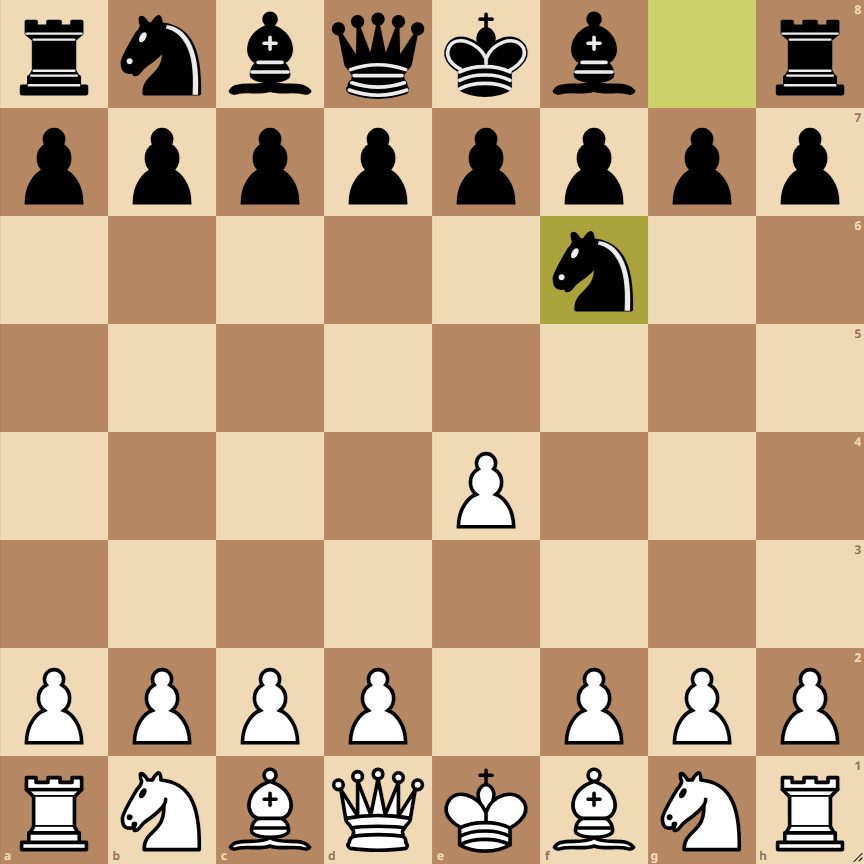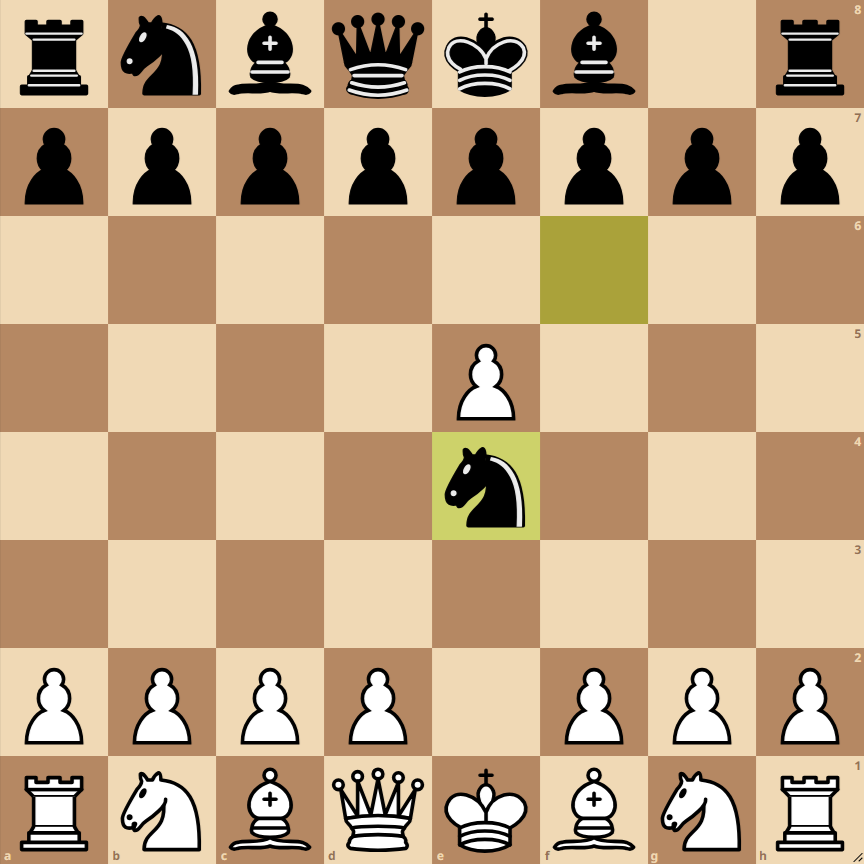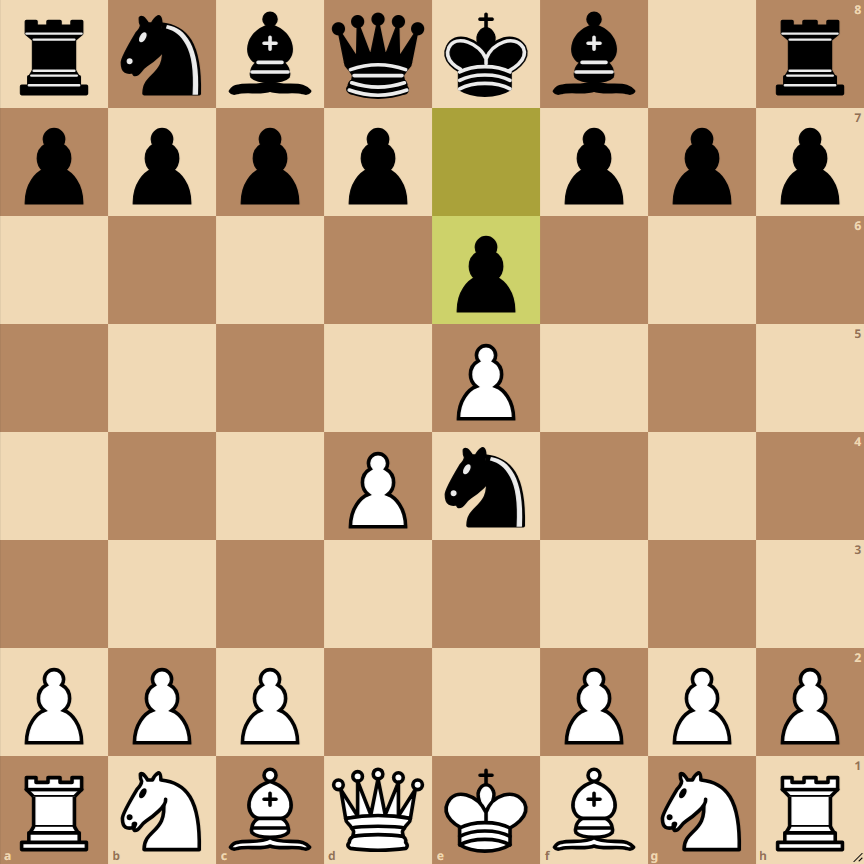How to Play the Alekhine Defense – Mokele Mbembe Vavra Variation



The Alekhine Defense, Mokele Mbembe Vavra Variation, is an opening in chess that starts with the following moves:
- 1. e4: White advances their king’s pawn two squares, controlling the center and freeing their bishop and queen.
- 1… Nf6: Black responds with the knight to f6, attacking the e4 pawn and preparing for dynamic play.
- 2. e5: White advances their e4 pawn to e5, displacing the black knight and gaining space in the center.
- 2… Ne4: The black knight moves to e4, an unusual move that aims to complicate the game and create asymmetrical play.
- 3. d4: White reinforces their center, preparing the development of minor pieces and controlling key squares.
- 3… e6: Black advances their e pawn, preparing to develop their bishop to f8 and solidify their pawn structure.
Variations of the Alekhine Defense – Mokele Mbembe Vavra Variation
1… d6
This variation aims to prepare the advance e5, freeing the bishop on f8 and creating counterplay in the center.
2… dxe5
After White’s e5 advance, Black can choose to capture the pawn. This exchange opens lines and can lead to a more tactical game.
3… d5
A central advance by Black, challenging White’s pawn structure and aiming to activate their pieces.

